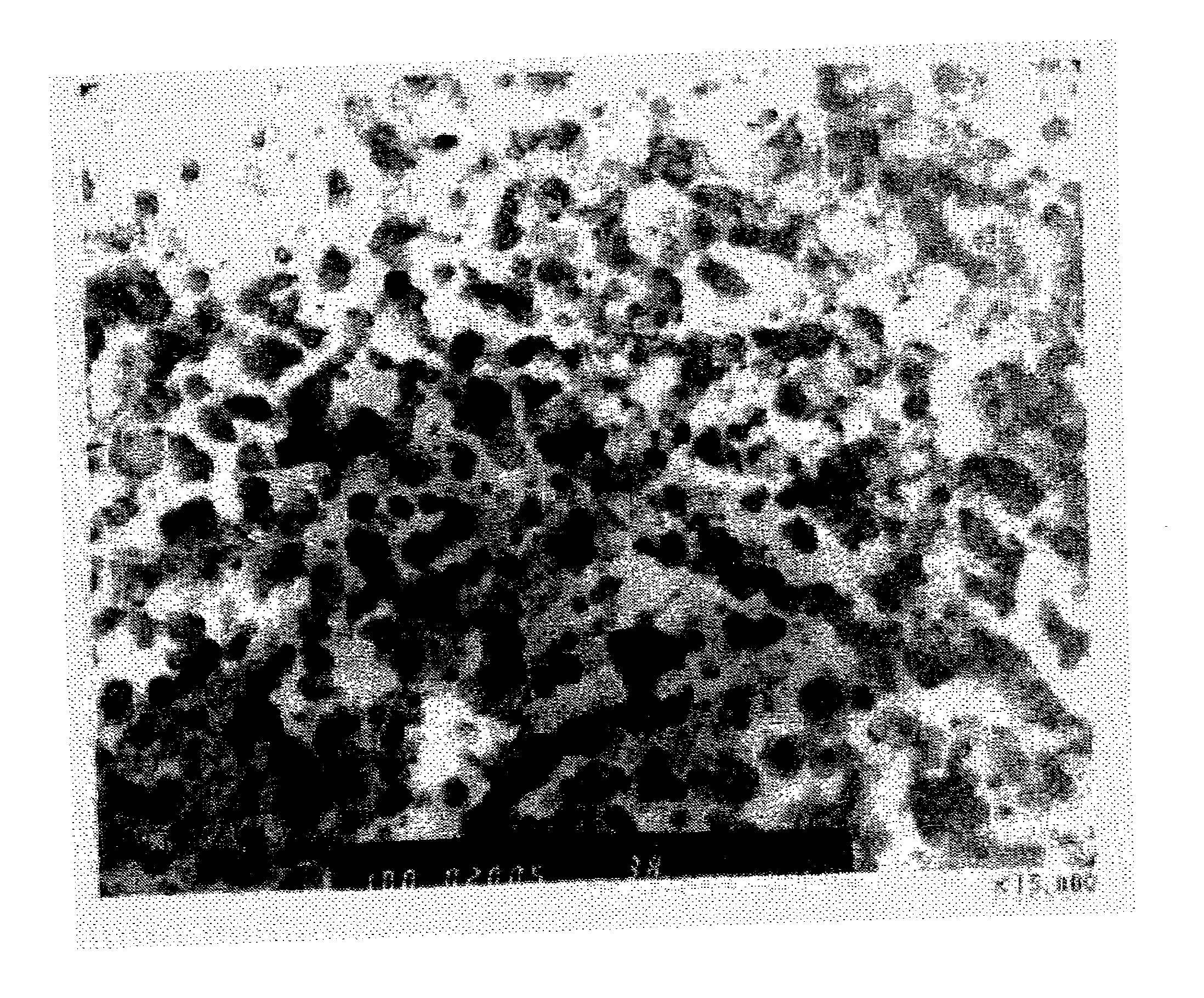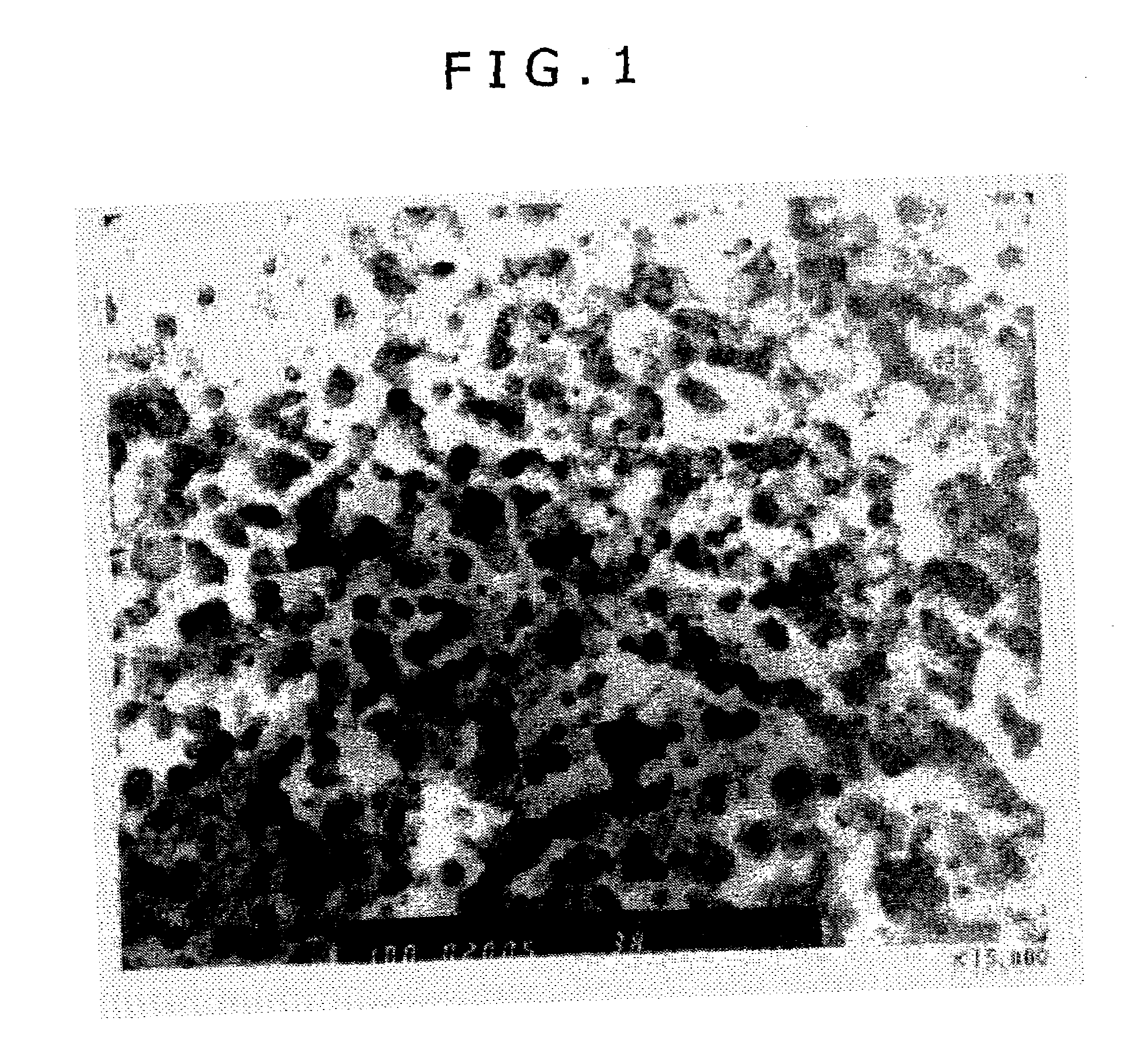Ai base alloy excellent in heat resistance, workability and rigidity
a technology of heat resistance, workability and rigidity, applied in the field of aluminum based alloys, can solve the problems of reducing strength remarkably and not having sufficient strength, and achieve the effects of improving elongation properties, increasing strength, and improving strength
- Summary
- Abstract
- Description
- Claims
- Application Information
AI Technical Summary
Benefits of technology
Problems solved by technology
Method used
Image
Examples
first embodiment
Composition of Aluminum Based Alloy
[0049]The chemical component composition (unit: percent by mass) of aluminum based alloys according to an embodiment of the present invention excellent in heat resistance and hot workability will be illustrated below, including reasons for specifying respective elements.
[0050]Aluminum based alloys according to the present invention each contain, as basic chemical component composition, 5% to 10% of Mn; 0.5% to 5% of V; 0.5% to 5% of Cr; 0.5% to 5% of Fe; 1% to 8% of Si; 5% or less (excluding 0%) of Cu; 3% or less (excluding 0%) of Mg; and 1% to 5% of Ni, in a total content of Mn, V, Cr, Fe, Si, Cu, and Mg of 12% to 28%, with the balance being aluminum and inevitable impurities. By containing specific plural elements V, Cr, Fe, Cu, Mg, and Si in combination with Mn, the aluminum based alloys contain specific plural intermetallic compounds concurrently to thereby have both improved strength at high temperatures and improved hot workability.
(Mn)
[0051]...
second embodiment
Composition of Aluminum Based Alloy
[0104]The chemical component composition (unit: percent by mass) of aluminum based alloys according to another embodiment of the present invention excellent in heat resistance, rigidity, and wear resistance will be illustrated below, including reasons for specifying respective elements.
[0105]Aluminum based alloys according to another embodiment of the present invention each contain, as basic chemical composition in terms of percent by mass, 5% to 10% of Mn; 0.5% to 5% of V; 0.5% to 5% of Cr; 0.5% to 5% of Fe; 1% to 8% of Si; and 0.5% to 5% of Ni, in a total content of these six elements of 15% to 30%, with the balance being aluminum and inevitable impurities. By containing specific plural elements V, Cr, Fe, Si, and Ni in addition to Mn, the heat resistance and rigidity, as well as wear resistance, are effectively improved.
[0106]The aluminum based alloys according to the present invention may further selectively contain, in addition to the basic ch...
experimental example 1
[0163]The present invention will be illustrated in further detail with reference to several examples below. It should be noted, however, the following examples are never intended to limit the scope of the present invention, and appropriate modifications and variations without departing from the spirit and scope of the present invention set forth above and below fall within the technological scope of the present invention.
[0164]A series of preforms were prepared by melting aluminum alloys having the component compositions in following Table 1 at a melting temperature of 1200° C. to yield molten metals; cooling the molten metals at a cooling rate of 100° C. per hour or more to predetermined spray starting temperatures; starting the spraying of molten metals at temperatures of 1000° C. to 1100° C.; and thus carrying out spray forming at G / M ratios of 2 to 10, respectively, using nitrogen (N2) gas. The spray forming conditions including the melting temperature, spray starting temperatur...
PUM
| Property | Measurement | Unit |
|---|---|---|
| size | aaaaa | aaaaa |
| lengths | aaaaa | aaaaa |
| temperatures | aaaaa | aaaaa |
Abstract
Description
Claims
Application Information
 Login to View More
Login to View More - R&D Engineer
- R&D Manager
- IP Professional
- Industry Leading Data Capabilities
- Powerful AI technology
- Patent DNA Extraction
Browse by: Latest US Patents, China's latest patents, Technical Efficacy Thesaurus, Application Domain, Technology Topic, Popular Technical Reports.
© 2024 PatSnap. All rights reserved.Legal|Privacy policy|Modern Slavery Act Transparency Statement|Sitemap|About US| Contact US: help@patsnap.com










